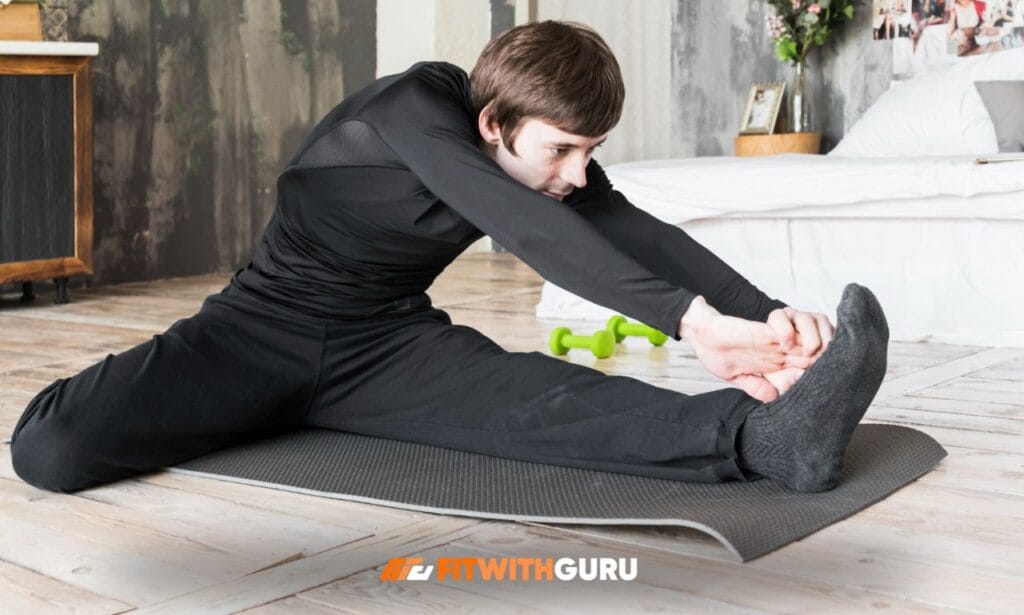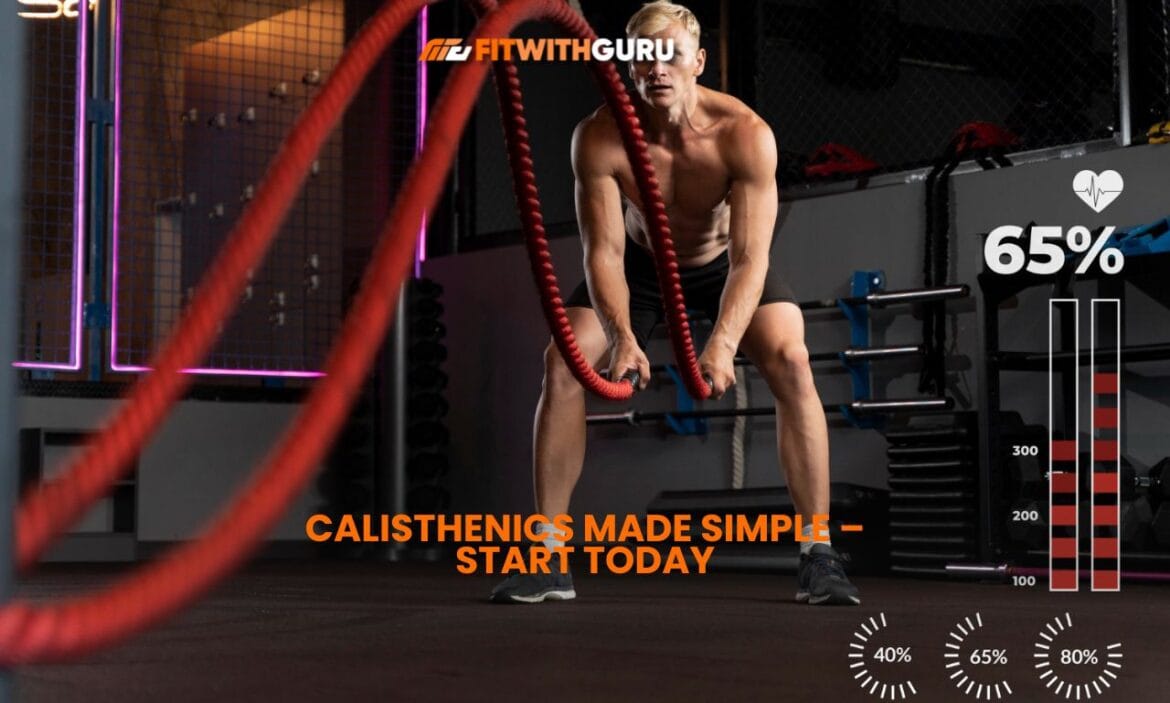Regarding fitness in 2025, the calisthenics program is one of the most potent ways to build strength, endurance, and flexibility, using only your body weight. Whether you’re a beginner or an experienced athlete, finding the right calisthenics program can make all the difference in reaching your fitness goals.
In this guide, we’ll cover everything you need to know about calisthenics program, from understanding the fundamentals to choosing the best one for your unique needs. So, let’s get started!
What is a Calisthenics Program?
Simply put, a calisthenics program is a bodyweight training routine designed to improve strength, flexibility, and coordination using exercises that do not require external weights or machines.
These programs typically involve push-ups, pull-ups, squats, lunges, dips, and other exercises focused on working multiple muscle groups. The beauty of calisthenics lies in its simplicity and the ability to perform exercises anywhere — at home, in a park, or even at the gym.
Why Should You Choose a Calisthenics Program?
There are several reasons why calisthenics programs have gained massive popularity. Some of the most compelling benefits include:
- Convenience: You don’t need fancy equipment or a gym membership.
- Cost-Effective: Calisthenics is free! All you need is your body and some space.
- Full-Body Strength: These programs target multiple muscle groups, promoting a balanced physique.
- Flexibility: You can tailor a calisthenics program to fit any fitness level.
- Injury Prevention: By using your body weight, you reduce the risk of strain that heavy weights might cause.
How to Choose the Right Calisthenics Program for You
Choosing the right calisthenics program requires assessing your fitness level, goals, and any potential limitations. Here are a few factors to consider:
1. Identify Your Fitness Level
If you are just starting out, choose a beginner-friendly calisthenics program that focuses on foundational movements like squats, push-ups, and planks. For intermediate or advanced levels, you can progress to more challenging exercises like one-arm push-ups or muscle-ups.
2. Set Clear Fitness Goals
Do you want to build strength, increase endurance, or enhance mobility? Understanding your specific goals will help you find a program tailored to your needs. Some programs focus on muscle building, while others concentrate on agility or flexibility.
3. Consider Program Duration and Intensity
Depending on how much time you can dedicate each week, you might want a calisthenics program that is either quick and intense or slower with more focus on technique. Choose a plan that aligns with your schedule and your comfort level.
Popular Calisthenics Exercises in Every Program
At the core of any calisthenics program are several key exercises. Here’s a look at some of the most popular bodyweight movements you’ll encounter:
1. Push-ups
Push-ups are the ultimate bodyweight exercise for upper body strength, targeting the chest, shoulders, and triceps. They are a staple in most calisthenics programs.
2. Pull-ups
Pull-ups are excellent for building back and arm strength. They require a pull-up bar, making them ideal for those with access to basic gym equipment or outdoor parks.
3. Squats
Squats work the lower body, focusing on the quads, hamstrings, and glutes. These can be done in various variations, such as single-leg squats or jump squats.
4. Dips
Dips target the triceps and chest. A parallel bar is typically used, but some can be modified to work on a bench or sturdy chair.
5. Planks
Planks help strengthen the core, promoting stability and balance. They can be held for extended periods to challenge endurance.
Creating a Custom Calisthenics Program for 2025
As you begin designing your personalized calisthenics program, building a balanced workout routine is essential. A good program will include exercises for strength, mobility, and endurance.
You can follow a typical split, working different muscle groups on other days (e.g., upper body on Monday, lower body on Wednesday), or combine full-body circuits depending on your goals.
1. Warm-up and Mobility
Always start with a dynamic warm-up, such as arm circles or leg swings, to increase blood flow to the muscles and prepare your body for more intense movements.
2. Strength Training
Focus on compound exercises (like push-ups, squats, and pull-ups) that work multiple muscle groups at once. You can progressively increase the number of repetitions or difficulty of each exercise as your strength improves.

3. Endurance and Cardio
Incorporate bodyweight exercises like jumping jacks, burpees, or mountain climbers to improve cardiovascular fitness and endurance.
4. Flexibility and Recovery
Include stretches and yoga-like poses to enhance flexibility. Giving your muscles time to recover is vital to avoid overtraining and promote muscle growth.
Advanced Calisthenics Techniques for 2025
If you’ve mastered the basics of calisthenics and are looking to challenge yourself further, here are some advanced techniques to consider:
1. Muscle-Ups
Muscle-ups are an advanced movement that combines a pull-up with a dip. They require significant upper body strength and technique.
2. Handstand Push-Ups
These push-ups require you to be upside down and focus on shoulder and core strength. They’re great for advanced athletes looking to build power.
3. Planche
The planche is an incredible bodyweight exercise that demands total body control. It’s often seen as the ultimate goal for advanced calisthenics athletes.
Building a Routine for Your Calisthenics Program
To maximize the benefits of your calisthenics program, consistency is key. Create a weekly schedule that includes strength training, endurance workouts, and recovery days. A balanced routine will help you stay motivated while avoiding overtraining.
1. Weekly Training Split
A typical calisthenics program split could look like this:
- Monday: Upper Body Strength
- Tuesday: Lower Body Strength
- Wednesday: Active Recovery or Mobility
- Thursday: Full Body Endurance
- Friday: Core Focus
- Saturday: Flexibility and Stretching
- Sunday: Rest Day
2. Progressive Overload
To continue progressing, gradually increase the difficulty of your workouts by adding more repetitions, reducing rest time, or incorporating harder variations of exercises.
Tracking Your Progress in a Calisthenics Program
Monitoring your progress is crucial to understanding how well your calisthenics program is working. Use a fitness journal or an app to track your daily workouts, the number of reps, sets, and rest periods. Take note of how your body feels before and after workouts to adjust the intensity as needed.
Common Mistakes to Avoid in Your Calisthenics Program
Even with the best intentions, mistakes can slow down your progress. Here are some common errors to avoid when following a calisthenics program:
1. Not Warming Up Properly
Jumping straight into intense exercises without a warm-up can lead to injuries. Always take time to warm up your muscles before starting your routine.
2. Overtraining
While it’s tempting to push yourself every day, your muscles need time to recover. Be sure to schedule rest days to prevent overtraining and injury.
3. Neglecting Mobility Work
Flexibility is just as important as strength. Include mobility exercises in your routine to avoid tight muscles and improve range of motion.

FAQs
1. How Long Does It Take to See Results with a Calisthenics Program?
It depends on your current fitness level and consistency. Typically, you can start seeing noticeable results within 4-6 weeks of regular training, but significant changes may take 3-6 months.
2. Can I Build Muscle with Just a Calisthenics Program?
Yes, you can build muscle using bodyweight exercises. The key is progressively challenging your muscles with more repetitions or harder variations of exercises.
3. Do I Need to Eat Differently for Calisthenics?
A well-balanced diet that includes enough protein, healthy fats, and carbohydrates will support your fitness goals. If you’re aiming for muscle gain, protein intake is especially important.
4. Can Calisthenics Help Me Lose Weight?
Yes! Calisthenics can help you burn fat and build lean muscle. Combine strength training with endurance exercises to create a fat-burning routine.
5. Can I Do a Calisthenics Program Every Day?
While you can train daily, it’s crucial to avoid overtraining. Incorporate rest days into your routine to allow muscles to recover and grow.
Conclusion
Choosing the right calisthenics program for you in 2025 depends on your fitness level, goals, and commitment. Whether you want to improve strength, increase endurance, or build muscle, calisthenics provides a versatile and effective solution.
The key is to start with a program that suits your current abilities and gradually progress as you gain strength and confidence. With consistency and determination, you’ll be able to master calisthenics and achieve your fitness goals!

